This article is part of the folder : Action Cœur de Ville : l'implication du Cerema
See the 22 news related to this folder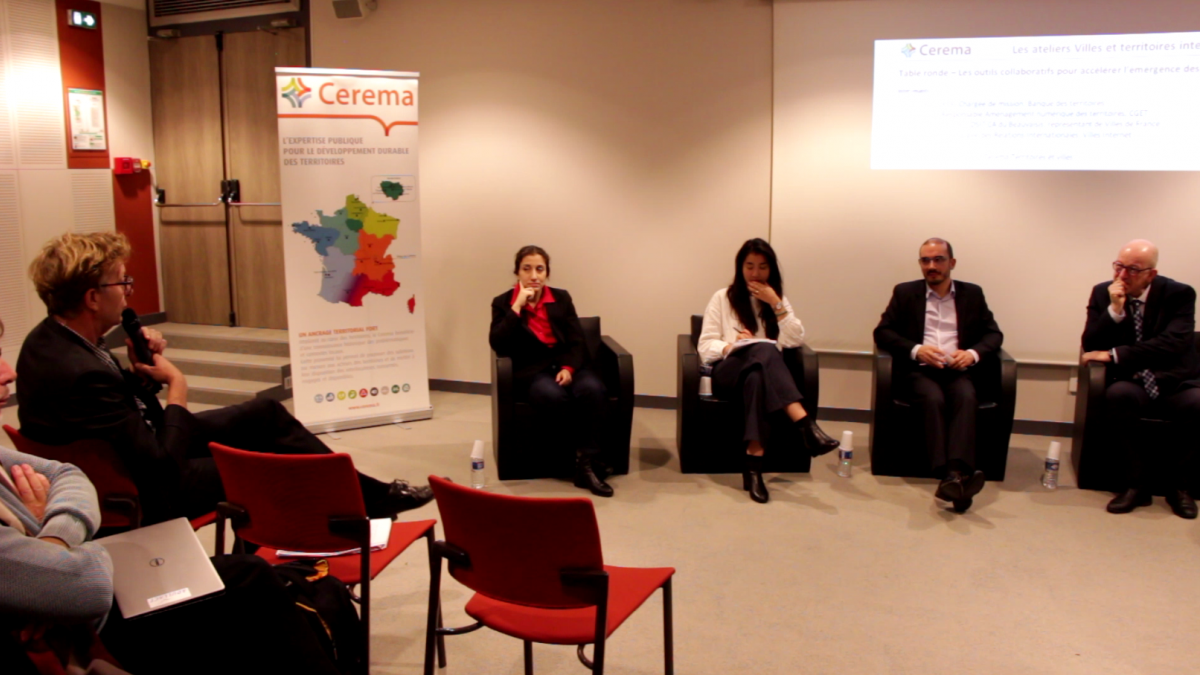
This opening round table for the first Smart Cities and Regions Workshops focused on the tools available to local authorities to accelerate the emergence of smart cities and regions. It was attended by Marie Aboulker, an officer from the Banque des Territoires regional development bank, Marc Laget, Director of Digital Planning at the General Commission for Regional Equality (CGET), Nicolas Schockaert, Director of Regional Information Systems for Beauvaisis, and representative of Villes de France, and Jacyntha Serre, International Relations Officer at Villes Internet. The round table was coordinated by Christian Curé, Director of Cerema Regional Development and Urban Planning.
The Villes de France Vision for Smart Cities
Nicolas Schockaert gave a presentation on how Villes de France, an association for medium-sized cities, sees smart cities: “In our view, a smart city is first and foremost a city that is able to reinvent itself, to plan ahead, and adapt to the needs of its residents. A city that seeks to improve quality of life, and knows how to consolidate its economic development”, he explained.
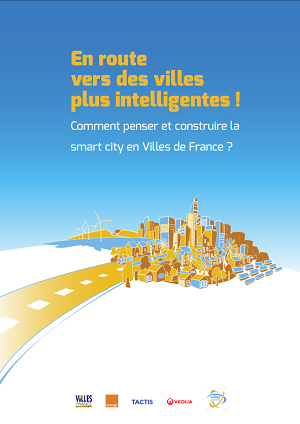
To do so, smart cities must be driven primarily by data, as well as relying on its residents. Digital technology is seen as a tool to generate savings and improve public services. But we cannot afford to overlook the sustainability of smart cities, nor their economic and social challenges. Villes de France believes that the full spectrum of stakeholders working on these challenges – public and private – have a role to play.
Research shows that there exists no general model for a smart city, but each strategy must take an individual diagnostic of the region into account, examining its assets, its needs and particularities, as well as its goals. “It is essential that all stakeholders share a single vision, accompanied by strong governance and political support”, Nicolas Schockaert highlighted.
Ville de France is heavily invested in smart cities, publishing, for example, a handbook entitled "The Road to Smarter Cities: Imagining and Building Smart Cities in Villes de France". In addition to this, in May 2018 Villes de France formed a work-group on smart city centres, which Cerema attended, and was a partner to the city of Nevers at the International Summit of Innovation in Median Cities (SIIViM), where Cerema gave a presentation. Lastly, in Paris on 12 December, the association held the Local Intelligence Gathering on cities of the future.
The Smart Solutions Concept
Marie Aboulker, an officer from the Banque des Territoires regional development bank, gave a presentation on smart solutions developed by the Banque des Territoires. She began by reiterating the bank’s aim for local authorities is to promote smart solutions to regenerate city centres. The aim is to encourage cities to launch a regional innovation initiative.
Smart solutions depend on local authority agents apprehending these tools, managing them, and bringing them to life. However, it is important that these solutions form part of a comprehensive regional development plan.
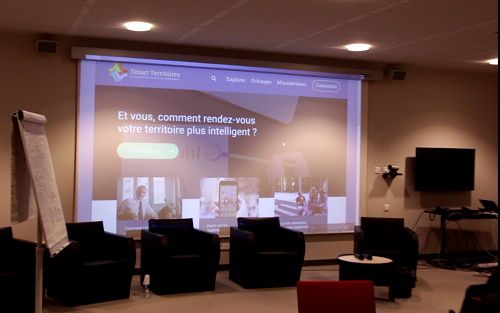
An analysis of the agreements passed as part of the Action Coeur de Ville programme show that 75% of the 222 agreements mention at least one innovative or Smart City project (450 projects in total). Business, and digital services for business, are a recurring theme in these agreements (20% of agreements). Next come mobility services, for the development of intermodal transport and slow mobility… There are also a lot of projects for tertiary spaces, as well as public spaces with the expansion of public WiFi.
There are, however, very few housing and construction projects, despite the great many digital solutions available in this field. Smart building initiatives are primarily the domain of property developers with new developments, followed by housing associations, who are working on home automation, energy management, and water. However, these projects generally apply to new builds, and are rare in city centres.
Initiatives are, however, being launched for energy renovations, such as Cahors with the Enerpat project to renovate buildings’ energy supplies. New proposals are being made for digital architecture, to provide data on energy renovations as part of a renovation plan. This initiative depends on a comprehensive approach on a building-wide scale.
Local authorities maintain a firm focus on existing solutions that are ready to use and short on innovation, with a focus on energy uses and needs.
There is a lot of support for local authorities in developing an overarching vision of their area and its evolution.
Different visions of smart cities
The participants also shared their different visions of Smart Cities.

Marc Laget, Director of Digital Planning at the CGET, offered insight into the CGET’s approach: "We want to obtain a multidimensional understanding of an area, examining how it may evolve as a Smart City. All while ensuring equality between regions. To achieve this, a comprehensive approach to the region is required".
The CGET sees three risks to the development of Smart Cities, which are to be taken into account immediately:
-
The risk that regional authorities pay for solutions that have already been developed by their neighbours
-
Risks related to interoperability: solutions must be able to adapt easily to different regions
-
The loss of long-term control over the solutions we have developed, in terms of both algorithms and data and metadata.
Jacyntha Serre, International Relations Officer at Villes Internet, mentioned the recent report on the French model for smart cities, submitted to the French Ministry of Foreign Affairs. The aim was to examine what the French model had to offer in comparison to other models. To achieve this, Villes Internet met with a number of experts and conducted case studies in France and abroad.
One of their findings was that innovation for Smart Cities can be broken down into three models:
-
The English/American "data city"
-
The Chinese surveillance city with great use of the Internet of Things (IoT)
-
Private, "start-up" cities, which are proving popular in India.
In France, smart cities belong to local authorities of different sizes, and often to median cities, which do not fall neatly into these three models, and have a vision of innovation with a social, rather than technological, focus. They implement simple tools, often with a limited budget, to develop services for residents.
This report is still in progress, with a call for contributions: Ville Internet is calling for the input of regional stakeholders and experts across six main themes. Villes Internet has also set out 20 recommendations and areas for action.
Sharing Experience of Various Smart City Platforms
Jacyntha Serre, from Villes Internet, mentioned the ATLAAS platform (a regional directory for digital services, stakeholders, and actions), which it designed in partnership with the CGET to bring members of the Villes Internet network together. It provides a map of digital services and actions that Villes Internet member local authorities have put into place. It is a kind of national observatory of digital public services, that also showcases these initiatives through the lens of the benefits for residents.
Marc Laget, from the CGET, recalled that there are a large number of initiatives, including one by the European Rural Network on "smart villages", that adopt a regional development strategy. A large number of platforms are available for business development. It could be useful to create a benchmarking scheme to help local stakeholders understand the offers available to them, and how to classify them. This is a key issue as business and the economy are essential to our regions.
Marie Aboulker specified that the Banque des Territoires has taken note of this substantial offering, and is working on a roadmap or guide to make it clearer. The Banque des Territoires has just launched a platform for its various clients (local authorities, social housing associations, legal professions), called the “directory of Smart City businesses”. The initial idea was to help both cities, who can become confused by the wide range of offers available to them, as well as businesses offering innovative services and who have an interest in these contracts.
At the time of writing, the directory contains around 100 solutions on offer from businesses, referenced by the Banque des Territoires. The platform also provides feedback and contacts, and is set to be padded out with reviews of the solutions and the ability to share experiences.
The need to support median cities
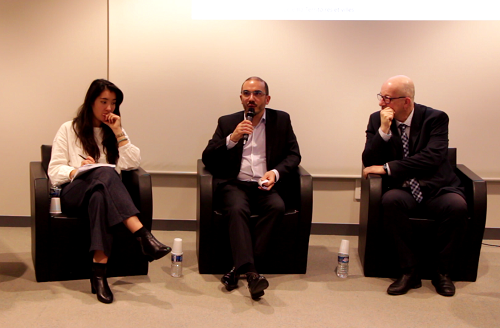
For Nicolas Schockaert, representative of Villes de France, median cities can have a hard time finding the offers that apply to them, and the support mechanisms already in place are also complex.Villes de France contributes to an Atlas which provides an ideal tool for regional emulation, letting regions see what other regions are doing.
It is important to use the various support mechanisms in combination, and Cerema can play a supporting role in this matter. Nicolas Schockaert also believes that it is important that local authorities talk to each other, and there are high expectations of ANCT with regard to these issues.
Marc Laget explained the CGET’s observation that in terms of strategy as part of Action Coeur de Ville, a certain number of elected political representatives plan on financing facilities on an ad hoc basis.Tools do exist, but there are a great number of them, and they apply to different regional scales. For example:
-
SDASAP: urban framework plan for accessing public services, on the departmental level
-
SCORAN: regional coherency plan for digital development, for development on a regional scale
-
The digital services and applications development strategy, on a departmental level
-
And all of this can be incorporated into SRADDET, on a regional level
CGET identified 117 different strategic documents covering the future of regions, focusing on a variety of themes.
This means that the issue is very complex, and the CGET has drafted a specifications document that sets out a methodology for selecting public digital investment based on its regional impact. The question that gave birth to the process was: what will my digital investment deliver for my region? This means in terms of economic development, first of all, then in terms of sustainability, resident well-being, public interest, equality, and digital cohesion between regions.
CGET suggests that regions apply this methodology on two different scales: on a regional level alone, and on a scale encompassing several local authorities. Even though it is a longer process and often slightly more expensive in the short term. This decision-making tool should be available in the first half of 2019.
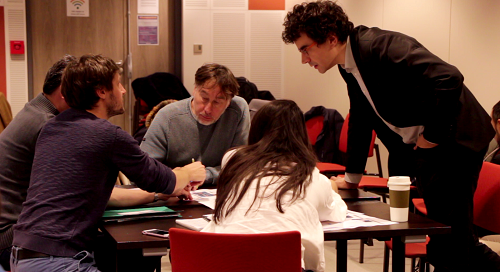
One finding shared by the various attendees was the need to work in project mode, bringing together different departments and specialities to focus on a smart region project. For Marie Aboulker from the Banque des Territoires, "creating Smart Cities means a change in the approach adopted by different services. The role of residents is evolving, but for that to work, there first needs to be effective governance that has the necessary human resources and big-picture management". Teams from different departments must be made aware of this issue and data must be shared, but sometimes there is a reluctance to do so.
According to Marc Laget, from the CGET, "A synergy must be found between three different roles in conducting projects: clarifying who will examine the context and solutions, who is the decision-maker, and who is the director, who regulates and organises. These three roles must be better-founded and coordinated".
In the folder : Action Cœur de Ville : l'implication du Cerema

